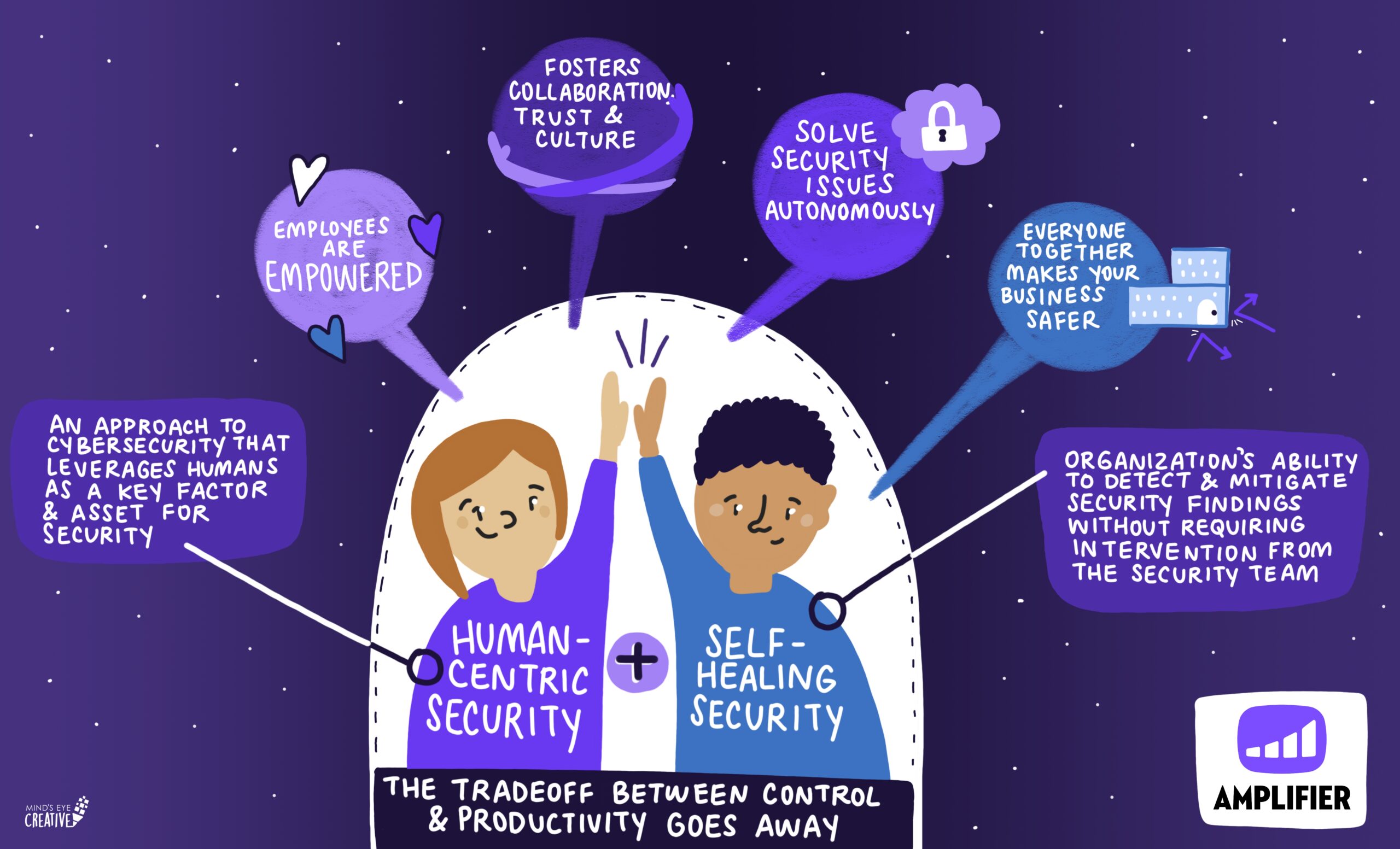Simon and Garfunkel. Sonny and Cher. Beyonce and Jay Z. We’ve always had iconic duos to carry us through the ages.
Now, I’m going to introduce the next act: Human-centric security and self-healing security. (I know, it’s not as catchy as the others, but the benefits to your organization’s security posture more than make up for it. Let me explain…)
Let’s set the scene.
It might sound provocative, but we know it to be true: humans are the weakest link in the cybersecurity chain. For businesses, this means that your employees are likely not behaving in a secure manner – not out of ill intent, but because they are unwilling to sacrifice productivity for security or are simply unaware of what they should be doing.
At the same time, security teams are deploying more and more tools to keep their organization protected. But as resources and budgets become more constrained, security teams can’t take full advantage of these tools. All it takes is one vulnerable device or human error for your organization to fall victim – and breaches seem to hit the news more often than ever.
It’s time for our iconic security duo.
Drumroll (and definitions), please…
Human-centric security is an approach to cybersecurity that leverages humans as a key factor and asset for security.
Self-healing security refers to an organization’s ability to detect and mitigate security findings without requiring intervention from the security team.
When human-centric security and self-healing security meet, the tradeoff between control and productivity goes away.
Take this example.
Let’s say a critical vulnerability is detected in a business-critical application. Your organization might implement self-healing security by requiring every employee to apply a patch to the app, without manual intervention from the security or IT team.
Ah, modern security at its finest. Beautiful, isn’t it?
Except your employees don’t see it that way. They’re just frustrated that their computer rebooted in the middle of an important Zoom call, or that Chrome shut down right as they were finishing a blog post about the future of security (as a totally hypothetical example).
That’s where human-centric security comes in.
Security teams that take a human-centric approach treat employees with empathy. Instead of forcing an update, they allow employees to schedule a convenient time to patch based on their free time slots. Employees are educated on the context behind each security fix and empowered to participate in their own security.
Modern security requires a balance.
Self-healing security can be disruptive, cause productivity issues, and create friction between security teams and the rest of the organization. Not to mention the nuanced skill set that includes both technical knowledge (of security data lakes, dashboards, remediation scripts, etc.) and business process considerations.
On the flip side, human-centric security is great for empowering employees and reducing friction – but it takes way too much time away from managing external threats and executing other strategic priorities that keep your organization safe. And with limited security resources, one-on-one interactions aren’t scalable.
Neither self-healing security nor human-centric security alone is sufficient to protect your organization. But together, that’s where the magic happens.
In the words of another iconic duo, it takes two to make a thing (security) go right.
Human-centric security and self-healing security are better together.
When self-healing and human-centric security meet, employees are still empowered, but without manual intervention from the security team. Automation builds an environment of collaboration and trust, enabling employees to play a role in their security at scale and democratizing security to the whole company.
The result? All employees can make cyber-informed decisions autonomously. Your workforce stops circumventing security controls. Security teams and other employees alike dance in your office halls in celebration of their shared commitment to your organization’s security. (Okay, maybe not that last one, but it will be less contentious.)
To put it simply, the merging of human-centric security and self-healing security makes your business safer. So, the next logical question is: how do you implement it? Stay tuned to our next blog to find out!


